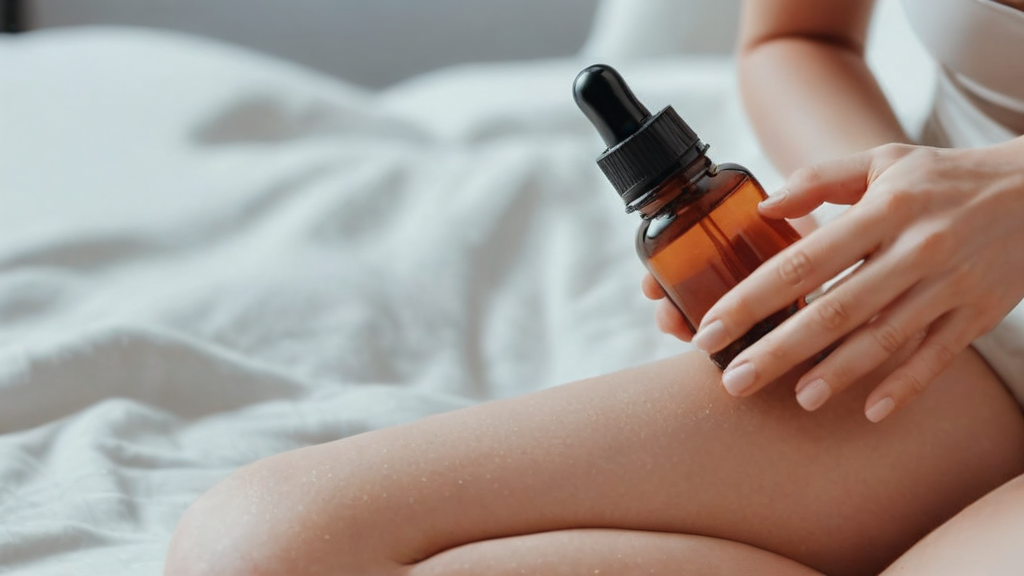What is CBD and what is its origin?
CBD or cannabidiol is one of the components found in hemp or Cannabis sativa L., a herbaceous plant that also contains other types of cannabinoids, such as THC or tetrahydrocannabinol, which has a psychoactive effect.
What benefits does CBD have for cosmetics?
Cannabinoids are not exclusive to plants, but our body also produces them naturally and they are called endocannabinoids. These compounds play an important role in skin care, as they interact with the endocannabinoid system (ECS), which regulates various skin processes.
How does CBD work on the skin?
The ECS is made up of receptors called cannabinoids CB1 and CB2, which are located in skin cells and have a lipid nature. CBD binds to these receptors and modifies their activity, which helps control skin sebum and has moisturizing and soothing effects.
For what type of skin is CBD recommended?
CBD is a great ally for oily skin, as it helps regulate sebum production and prevent acne. In addition, CBD also contributes to maintaining the balance of the skin, as it participates in antioxidant processes, in the conservation of collagen and other structural proteins, and in the hydration and elasticity of the skin.
Why use THC-free cosmetics?
THC is a psychoactive substance found in the cannabis plant, which produces memory and mood disorders, and which can lead to addiction if not properly controlled. For this reason, international legislation considers it a substance subject to health control, and it can only be used medicinally (in some drugs) under medical prescription.
What is the difference between THC and CBD?
As we have already mentioned, CBD does not have a psychoactive effect, while THC does.
Current regulation in Spain
In Spain, CBD is currently allowed to be used for cosmetic products, such as oils, creams or ointments. However, only cosmetics made from seeds and leaves can be legally produced in Spain.
Cosmetics with CBD or cannabidiol
CBD is a very versatile ingredient, which can be found in different types of cosmetic products, such as:
CBD liposomado
It is a liquid, non-greasy format that, thanks to liposome, improves the absorption of CBD into the skin. Normally these cosmetic formulations with liposomed CBD contain pure CBD.
Cosmetic ampoules with CBD
They are blisters with liquid, non-oily content, which may include CBD (cannabidiol) and vitamins. Cosmetic ampoules with CBD have relaxing and comforting properties on skin with atopic tendency, irritation or with imbalances in cutaneous sebum such as acne or due to the use of a mask.
Oils with CBD
The format of oils with CBD is a liquid format that in some cases may take time to be absorbed.
Balms with CBD
It is a format with less consistency than creams, and in some cases CBD is combined with essential oils.
Lotions and Creams with CBD
They generally do not contain only CBD but other ingredients are added, and they are thick in texture.
CBD Serum
Generally, serums are used to prepare the skin before applying other cosmetic products, with a non-greasy texture and more concentrated active ingredients.
Deodorants with CBD
The main purpose of a deodorant is to prevent or combat odor, without irritating, including zinc or baking soda, essential oils and cosmetic oils or butters.
Soaps and hygiene with CBD
Soaps are produced from the mixture of water, soda, oils (cosmetic and essential) and various stabilizers or thickening agents. CBD can be added to this, making it gentler on the skin than traditional soaps.
References:
– Baswan, S. M. et al. Therapeutic Potential of Cannabidiol (CBD) for Skin Health and Disorders. Clinical, Cosmetic and Investigational Dermatology 2020:13 927–942.
– Candela García, E. & J. P. Espada Sánchez. A historical review of the uses of Cannabis and its regulation. Health and drugs, vol. 6, no. 1, 2006, pp. 47-70.
– Dhadwal, G. and M. G. Kirchhof. The Risks and Benefits of Cannabis in the Dermatology Clinic. J Cutan Med Surg. 2018 Mar/Apr;22(2):194-199.
– Maida, V. et al. Topical cannabis-based medicines – A novel paradigm and treatment for non-uremic calciphylaxis leg ulcers: An open label trial. Int Wound J. 2020;17:1508–1516.
– Tennstedt, D. & A. Saint-Remy. Cannabis and skin diseases. Eur J Dermatol 2011; 21(1): 5-11.
